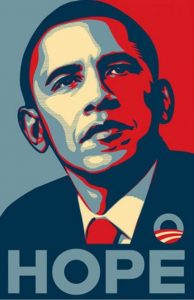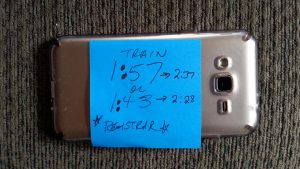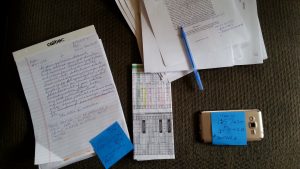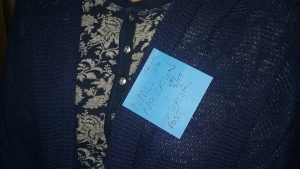Author: Carolyn A. McDonough
Collaborative Project–McDonough/Zhao-East Meets West
COURSE TITLE: “EAST MEETS WEST: CROSS-CULTURAL COMMUNICATION ACROSS DISCIPLINES”
DISCIPLINES: INTERDISCIPLINARY 100-LEVEL FOREIGN LANGUAGE and INTRO MEDIA STUDIES
INSTRUCTORS/CREATORS: Carolyn A. McDonough and Jing Zhao
Communication among cultures has become increasingly frequent in an age of globalization, making cross-cultural communication skills essential in the tool kit of a modern day college/university student. As instructors in higher education, how do we assist undergraduate students in both the opportunities afforded through such instantaneous global communication and the challenge digital era post-millennial communication presents?
This 100-level course for undergraduate students will explore the question through an interdisciplinary approach combining two inherently multidisciplinary fields of study: Language Studies and Media Studies.
“Culture” is an extremely profound concept that can be approached from various angles. “Culture or Civilization, taken in its wide ethnographic sense, is that complex whole which includes knowledge, belief, art, morals, law, custom, and any other capabilities and habits acquired by [human beings] as members of society,” as described by British anthropologist Sir Edward Burnett Tylor. The term “culture” is complex in nature and studied by various disciplines, especially those under the larger umbrellas of the humanities and social sciences. Teaching “cross-cultural communication” therefore, is an interdisciplinary act incorporating multidisciplinary knowledge and interdisciplinary methodologies.
As instructors of Chinese language and Media Studies, we are keenly aware of the complexity of language, culture, media and educational technology. We were inspired to create a course on the intersectionality of these in the larger context of cross-cultural communication. We will combine our individual disciplinary approaches pedagogically as “critical co-investigators” and culminate the course with the “student as producer” in the Final Project. (Rosen and Smale, Open Digital Pedagogy=Critical Pedagogy, 2015)
The interdisciplinarity and cross-cultural communication focus of this course thereby also speaks to the concept of “connectivism” in both higher education and modern culture-at-large. “Learning is a process of connecting entities” and the “ability to see connections between fields, ideas, and concepts” is a core skill. (Stephen Downes, Elements of Connectivism, 2011) Our course design is thus an embodiment of connectivism. Students are encouraged to make connections between elements of “culture” through various disciplines, some of which they may have little or no prior knowledge to access or experience in studying.
Siemens points out the importance of “unknown knowledge” by stating that “our ability to learn what we need for tomorrow is more important than what we know today.” (George Siemens, Connectivism: A Learning Theory for the Digital Age, 2004)
This new cultural imperative, then, is the mandate of the student/citizen in the post-millennial digital, global era: that of being connected and making connections among various disciplines. Siemens emphasizes “[T]he starting point of connectivism is the individual” (Siemens, 2004) as the locus of a network which becomes an organization.
Learning, however, is not entirely under the control of the individual, according to Siemens.
Therefore, in order to make connections in interdisciplinary learning, students need to collaborate. For this reason, it is required that students work in teams of two to complete their Final Project. They will also need to research effective tools/resources and to present the results of critically utilizing them.
The course itself will become a network example of Siemens’s connectivism.
Digital tools are thereby inherent in the course design and are an embodiment of establishing such networks for learning. Students will be required to use multimedia resources, and the “languages” of different media, to demonstrate a collaboratively established network. Critical thinking is highly engaged when encountering media texts and it is also enlivening to encounter new types of media in both teaching and learning.
Description of Final Project:
Students will be required to create a visual “academic ad campaign” in the form of a digital media flyer/poster/handout/online ad, etc. that promotes cross-cultural exchange via language study between universities. Students must conceptualize, design and create a visual that would be seen on campus, or on the university’s website, announcing an opportunity to study another language abroad, in the language of a host university.
For example, a flyer at the University of Florence would announce an exchange program to “STUDY CHINESE IN CHINA” written in Italian. Conversely, a flyer at the University of Beijing would announce an exchange program to “STUDY ITALIAN IN ITALY” written in Chinese.
In teams of two students per team, choose two universities from two different cultures. Research your choices. Collaborate by comparing and combining your research. Design an ”academic ad” to announce and promote cultural exchange via a language study program. Your joint findings should inform the ad’s content while also communicating cross-cultural exchange through language study.
The following components are required in the Final Project:
-Digital Media Design (sourcing visual media/collecting visual media)
-Language and cultural references and/or symbols intended to promote, convey and facilitate cross-cultural communication.
Your team will be responsible for creating TWO different “academic ads”. Please see the following visual example:
Example_Visual_For_East_Meets_West_Final_Project
We encourage you to research print ads, posters, online ads, broadcast ads, travel publications, travel websites, cover art, artwork found in scholarly journals, etc., and DON’T FORGET to also look around while going about your day. We are surrounded, indeed barraged, by visual images and these can often spark ideas.
HELPFUL HINT: SYMBOLS SUMMARIZE and REPRESENT. THINK MEME.
Digital design tools must be used and may range from basic Microsoft Office or more advanced digital design software such as Adobe Photoshop. Feel free to explore the many free photo editing apps like PicLab and filter apps, or go “old-school” by creating a hands-on collage of images from magazines (but this MUST be scanned in to a digital format and submitted digitally.)
The Final Project is to be submitted/posted digitally in .jpg or pdf file format to the class blog site. Peer review is highly encouraged.
The criteria we will use to evaluate and assess the Final Project and fulfilling its requirements are:
-overall digital media design
-use of language and symbol
-does the ad/meme convey a sense of connectivism?
-is the ad culturally sensitive and gender friendly?
-was care employed in the design and in the use of digital technology to disseminate media?
Rationale for Final Project:
STUDENTS ARE TO DEMONSTRATE CROSS-CULTURAL COMMUNICATION SKILLS [language/media/digital media/social media] AND BE ABLE TO COMMUNICATE/EMBODY THESE IN VISUAL FORM. STUDENTS MUST ALSO DEMONSTRATE FEMALE PEDAGOGY THROUGH CULTURAL SENSITIVITY.
Technology is key in achieving connectivism. In a globalized era, in real time or asynchronously online, it is essential to seek the positive aspects of different cultures for peaceful co-existence in shared spaces, both physically and virtually. Therefore, the tone of our course is one of “care” toward our students, our network, our organization, and so on, in the hope of helping students identify, analyze, and apply the “nurturing” aspects of technology to enhance cross-cultural communication.
Using technology in a responsible and “caring” manner to discover the more “humane” side of technology instead of treating technology as “neutral” and emotionless is very important in developing a “humane” attitude toward using “objects”. This kinder attitude will assist students in learning how to deal with the culture of technology upon us, which has become a part of everyday life globally, as they embark upon careers, while fostering both connection and cross-cultural communication.
Carolyn A. McDonough is a non-matric in the ITP Certificate Program at The Graduate Center, CUNY. She is applying for the MA in Digital Humanities and holds her first MA in Media Studies with a BA in Medieval & Renaissance Studies. She enjoys how her degrees come together in the field of the Digital Humanities and is interested in cultural studies.
Jing Zhao is a student of Masters of Liberal Studies program at CUNY Graduate Center, digital humanities track. He is also a Chinese language teacher and translator. He is interested in studying the affordances of educational technology and second language teaching.
2 Images: 1 Powerful, 1 Derivative


Per our class discussion Monday, March 19, here is the Obama HOPE poster designed by Shepard Fairey in 2008–American artist via skateboard culture–and the KONY 2012 poster “thank you gift” from the “Action Kit” for donating to Invisible Children, the organization that produced a documentary film with the same title. While the film became a YouTube video phenomenon in 2012, the very public breakdown of its maker, Jason Russell, came to dominate the media coverage, shifting the story from Kony’s atrocities and the Invisible Children, to Jason Russell’s personal life as tabloid fodder, exposing his evangelistic agenda. The whole arc playing out in real time during my Media Studies 101 course Spring 2012 semester, as we delved into the film and discovered its bias, gave my students a great example of persuasion, media hype, fame/celebrity and an emerging medium (YouTube) as they employed critical thinking habits in analyzing the film and very complicated attending humanitarian and political issues.
Hybrid/Online Learning II
I approached this week’s readings keeping last week’s readings in mind because this week’s class is Hybrid/Online Learning, Connectivism, and the University II, while also considering the prompts from the syllabus and the larger context of the Digital Pedagogy Unit we’re currently studying. At times while reading, reviewing last week’s readings and “task-switching” to print important pages and/or look up terms in the readings, it felt like juggling with all the balls in the air at the same time. But the good news is that by this morning, the readings’ content and their context started to gel.
I’d like to focus on Chapters 4-5 and Appendix in Digital Technology as Affordance and Barrier in Higher Ed (Smale and Regalado, 2017) and leave the remaining readings for class. I’m really intrigued by the very vast quantitative study that Smale and Regalado undertook, the extreme detail they went into with each participant and constituency, and their findings from a such labor-intensive research project for both participants and researchers.
Chapter 4 “College Students, Technology and Time” treats the concepts of time and space in tech. I must admit, as I stare at 4 major projects on my desk and desktop with deadlines all close to each other within the coming weeks, reading about time and time management in academic work with the task of being this week’s motivator was pushing my buttons. Still, the concept of time + space in tech is larger than my own personal situation. For example, we all experience that “digital devices teleport work into spaces and times once reserved for personal life” (Wajcman 2015, 137 in Smale and Regalado 2017, 60) and while this can be great it is also be really tricky to manage.
So I pose this opening question: how do you manage tech in spaces and times once reserved for personal life?
I myself have maintained “sacred times + spaces” such as meals with family, mornings, bedtime, and DRIVING, during which no tech is allowed. This has been a tech battle with my teen since her high school teachers use Remind apps, Google classroom, etc. and often post important info very early in the morning on the day of classes or late at night the night before classes. I get aggravated by this because I feel it erodes all the years of my parenting/modeling “no tech” at such times.
Start the day with a sun salutation not a Facebook update, please!!!
Chapter 4 also speaks to the need for students to be “adaptable” due to the vicissitudes of tech (slow wifi, smartphone charging, power outages due to weather, etc.) As a freelancer (which we’re not supposed to say anymore, I believe the correct term is now “flex time worker”) and adjunct professor, in my “lived experience”, adaptability is essential.
Do you find your students to be rigid, adaptible/flexible or just simply not skilled enough yet with tech? What are some of the affordances and barriers you encounter as teachers and in your students?
I’ve thought about this often in the context of “the trope of the digital native” (Smale and Regalado, 80). I, too, agree Smale and Regalado, who are in agreement with “Bennett and Maton (2010) who suggest we must move beyond the ‘digital natives’ debate as it currently stands” (Smale and Regalado, 75) or as Ryan Cordell articulates in “How Not to Teach the Digital Humanities” (a reading from Core 1) “digital native does not equal mastery”. (Debates in Digital Humanities 2016, 464)
In Chapter 5 “Recommendations for Technology in Higher Education” the researchers “found that fixed tech’s greatest restriction on students’ academic task-scapes is that it requires them to create academic space for themselves in locations that may be occupied by multiple other people engaged in a variety of activities… Mobile tech can allow students to transcend place… affording them the opportunity to reduce the distractions of others” (Smale and Regalado, 74) to which I’d add, provided their own distractions (notifications, updates, Snapchat selfie taking etc.) are turned off or silenced while they’re working academically, in order to amplify/maximize/dedicate time. I heard a study cited–I can’t remember the name or group which conducted it at the moment–which reported that it is estimated that women in college spend 10 hours PER DAY futzing on smartphones–why the study singled out women I don’t know–but still, this is staggering!)
To the point of time usage and economy, the students revealed a finding that the “most useful” tech was for “managing time or time-saving”. But while “technology can certainly be harnassed to provide support for student time management” (Smale & Regalado 81) I find the use of remind apps to be another tricky thing to manage in and of themselves. They’re great when the remind is programmed or the event info is input by students themselves, but if it’s part of a larger automation I think it takes away from learning the very valuable and essential time-management skills, that are also a BIG part of learning and researching.
In summary, Chapters 4, 5 and Appendix bring to light the “lived experience” of tech, or as Laurie Hurson said during a TLC workshop that I attended (which Jing and Kyueun also attended) on Teaching With the Commons when WordPress hit a bump during a demo, “this is when tech gets real”.
I’ve found that the use of tech is always about “the time created with one digital technology evaporate[ing] due to the barriers of another” (Smale & Regalado 64) and that we must CHOOSE WISELY as educators and students ourselves.
Chapters 4, 5 and Appendix also bring up the concept of BOUNDARIES in TIME/SPACE/PLACE and made me examine the following questions in regard to academic work, which: -Where do I want to work? -What time/s can I work? -WHEN do I work best? WHEN does my sched allow me to work? (often the ideal/optimal/desired times do not correspond to deadlines.)
Perhaps we could create a check list of FUNCTIONS of TECH in HIGHER ED:
-Learning
-Teaching
-Exchanging: academics, relevant anecdotes in both academic content and academic tech
-Streamlining! Less is more
What would you add this this list?
Finally, how do you think these chapters speak to the syllabus prompts:
“What are the biases of the technologies we’re using, and how can we interrogate those biases from within the environment they have created?”
It’s clear from reading Smale and Regalado’s comprehensive research that tech access + digital literacy are matters of social justice. I really liked the professor in an allied health department at City Tech who said, “as faculty we teach content, but I like to think that we, more-so, facilitate learning through technology”. (Smale & Regalado 80)
Indeed, I find this to be the mandate we face as educators.
In closing, please find photos of my own personal remind system, the very high tech Post-It Note attached to my smartphone and clothing. The most important thing about tech, low or high, is that it must work for you.
Works for me!



Intro Project Ideas
I’d like to build a tool that would help students learn historical and cultural references in order to strengthen humanities undergrad liberal arts education. Many Freshman don’t know the most basic references of historical figures, myths, objects, monuments, literary references, cultural moments, etc. I see this as an interactive platform, perhaps in a blog/vlog form or in a technology format that I’m not yet versed in and/or that I might design and build.
One of the models for this idea is the 2010 BBC’s Radio 4 series, a “History of the World in 100 Objects” and the 2017-18 MoMA exhibition titled “Is Fashion Modern?” of the 100 most influential fashion items.
I see this tool being of use and value, through this example: I was teaching Media Studies 101 one day and the subject of Iago came up. The class stared at me blankly—no one knew who Iago was, shockingly. So rather than “lecture” them on Shakespeare I asked them to name any other antagonist or “villain” they knew. Silence. So I took it down another notch and asked them to identify an “evil” character or a “nemesis”. Still nothing. Enter the tool I’m envisioning which could be accessed and searched at that moment to bring up Iago, and then other references. Iago could be made to “ping” Shakespeare, Othello, the year/s Othello was written, actors who’ve portrayed Iago on stage and on film, and additional cross references.
I’m interested in learning and exploring Twine for this project idea, and recently, Omeka was recommended to me for it also.
These are my initial thoughts and conceptions, and I look forward to exploring them toward building this.
Carolyn A. McDonough Bio
Hi all, I’m Carolyn and I’m a non-matric hoping to become a matric in Fall 2018, applying to the MA in DH program at the GC. I hold my BA in Renaissance Studies and my first MA in Media Studies. My areas of focus within these two fields of study are history, Italian, Cultural Studies and all-things-media. I really like how Digital Humanities combines my two fields of study and the ITP Certificate Program is affirming this while also allowing me to explore many new ideas in combining the two. I’m very interested in critical thinking and thinking critically. I’ve adjuncted with a lecture appointment in Media Studies 101 “Media and Everyday Life” which was a Tier-1 critical thinking requirement for the Freshman I taught.
I’ve also worked as a digital media producer/editor for my own ventures and on the staff of major digital portals and international periodicals. I was awarded a post-grad Fellowship to the Peggy Guggenheim Collection in Venice, Italy, and more recently, a scholarship from the Museum of Modern Art (MoMA) for the online course “CATALYSTS: Artists Creating with Video, Sound and Time” through which I launched my blog/vlog cultureartmedia.com.
My avocation is music, voice, and vocal recording. I’m a third generation performing artist with performance credits that include national voice over campaigns, and I also teach voice in my “spare time” primarily to my daughter who is an accomplished singer/actor, but also to other up-and-coming young performers. I feel an equal passion for both my academic work and my creative/artistic work. I met my husband in Italy at the PGC where he was a fellow “fellow” and together with our daughter, we’ve shared many adventures in the arts over the years.
I’m really enjoying the ITP Certificate Program classes, fellow students, professors, labs and all that I’m learning through all of these.

